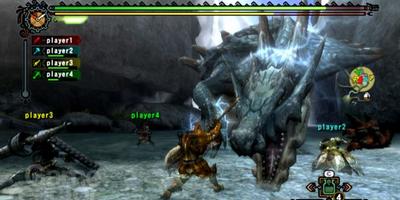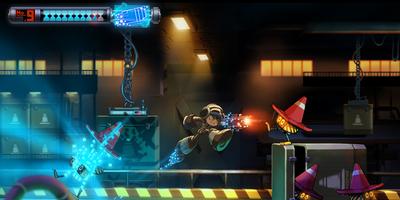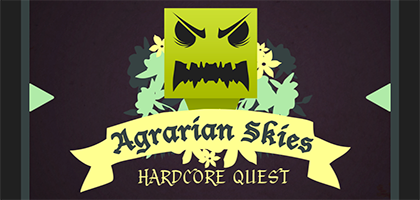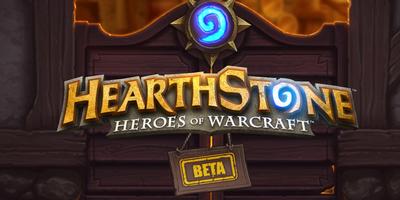- by Bruce "Moose" Fraser
- Posted on March 26, 2012 @ 4:00 PST

I have always used the “training” levels that games used to provide, such as the ones in Half-life and Command & Conquer GeneraIs. I found that while they gave specific instructions, the developers made them worthwhile, and it meant that you never had to deal with instructions while playing the real thing. I think unless the game’s setting really permits it, “on-the-job training” is difficult to justify, why would a grizzled soldier or seasoned commander need basic training?
How this “on-the-job training” becomes acceptable is good level design. If there is a good learning curve and the speed of the game is well paced, you don’t need someone yelling at you to blow up that building. For an excellent description of how this contextual learning works, Egoraptor’s Sequelitis is a great watch, it covers how Capcom perfected the “one level learning curve”.
When a game gives you a vague instruction, such as “find a way into the building”, and there is a certain entry point that might take a few minutes of searching. Do you think it’s too hard? Probably not. But if you are told that there is a basement door on the west side of the building that is marked on your map and has a waypoint marker on it, is it too easy? The most comparative thing I can think of is canned laughter on a TV show, do you need to be told that someone made a joke? Sometimes, subtlety can make all the difference.
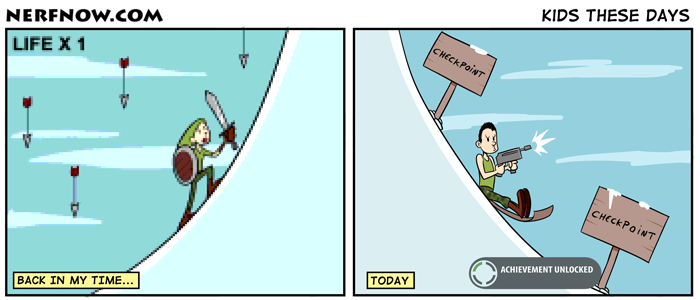
Games these days seem to cater to the new player, as if they have never played a game before. I know there are completely new players, but that doesn’t mean you need to tell them how to shoot or move. Sometimes all you need to do is provide a controlled environment that requires the player to use each of their skills, instead of telling them “press X to reload”. If you design the start of the game properly, you don’t need to have a single tooltip. Sure it might help the player, but often it’s just going to be insulting. I was playing The Legend of Zelda: The Minish Cap recently, and at one point in the second to last dungeon, I was told “ That panel has hinges, I wonder what would happen if you jumped on it?” Seriously? It was the only point of interest on the screen, nowhere else to go, and yet I am still told what to do?
Developers are acting scared, because they know there is a market that doesn’t like a challenge. Most likely from publisher pressure, they believe that if a player gets stuck, their frustration will turn into poor reviews etc. The fact of the matter is that if you don’t have those dry spots in a game, your achievements will seem less substantial. There is a significant difference between a challenging part with a clear goal, and broken gameplay. Now, use your scroll wheel to move down this web page, left click on the comment box below and type a reply using the keyboard.
To a certain extent, I agree with you. However, one of the most important rules of game design is to never assume anything about the player. You cant assume the player knows how to move or jump, even though 98% of your players will. This is why the "hand holding" within the first 5 minutes of the game is needed, and the best games find a way to work it into the first level so as to not be distracting or patronizing.
Generally speaking, though, when you see examples of hand holding later in the game (like in your Minish Cap example) it is usually because there was confusion on how to continue during in-house play testing. Something that may be blatantly obvious to you could keep another player stuck walking in circles for hours, and when that kind of thing happens Quality Assurance will submit it back to the developers as a bug. Often its just easier for the developer to design in a hint system or add in overly specific quest objective text than to have their code keep coming back from QA.
Well, I agree. Think about what the most popular games of today are and if you've played them, think about the story mode or the overall playstyle of the game.
Call of Duty, Elder's Scroll, Various MMOs. All these are different types of games but when played, the devs seem to hold your hand with everything. From where to go, what to do, and how to do it. And the general audience is cool with it. Games cater more towards the casual audience than they do the standard hardcore audience.
That's why games like Dark Souls appear to be incredibly hard. Yea, it's a hard game, don't get me wrong, but gamers of today continue to make the same mistakes over and over again. Die again and again. But they're gamers, they believe it's challenge, when it's clearly impossible. A few of my friends were incredibly frustrated till I told them the core mechanics and mind-sets of the game. Now they go through it with a better understanding of what to do.
Gamers come in all sorts of flavors. So if you were gonna choose which part of the spectrum to cater to, it'd have to be the casual audience, because the hardcore gamers, well, they'll just eat what they can get and find enjoyment in their own way.
The main irritance I find with the "hand holding" is that they convey it in a bad way, Modern warfare 2 did it pretty well with you demonstrating to others how to shoot etc.
And Art, I guess you're right about some puzzles not being obvious enough, there isn't much you can do without a great deal of work.







